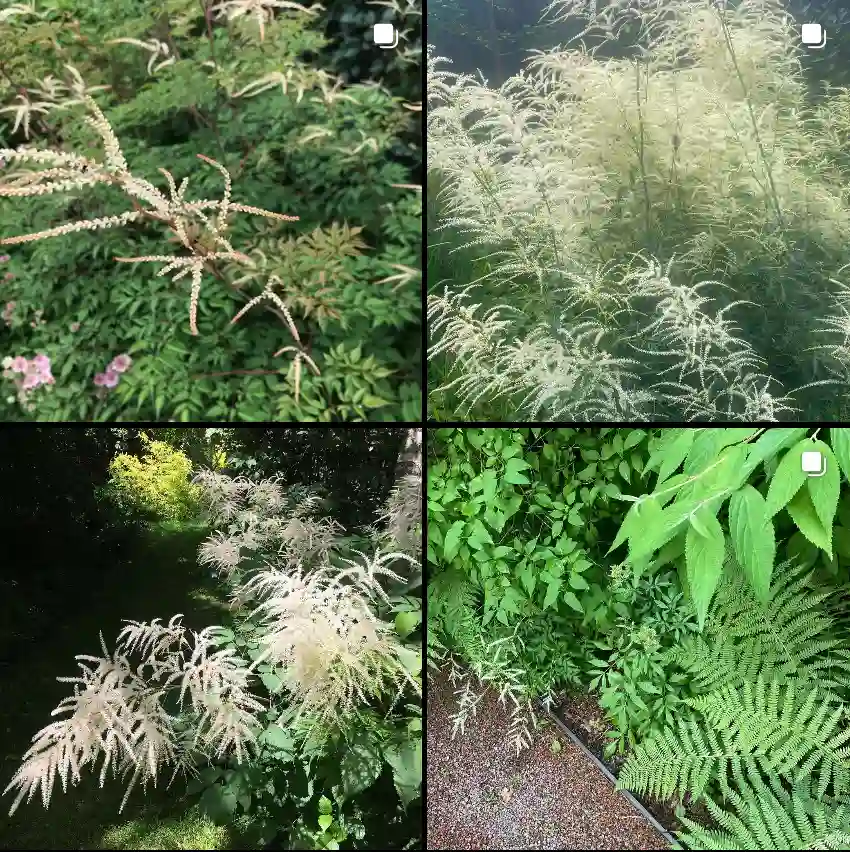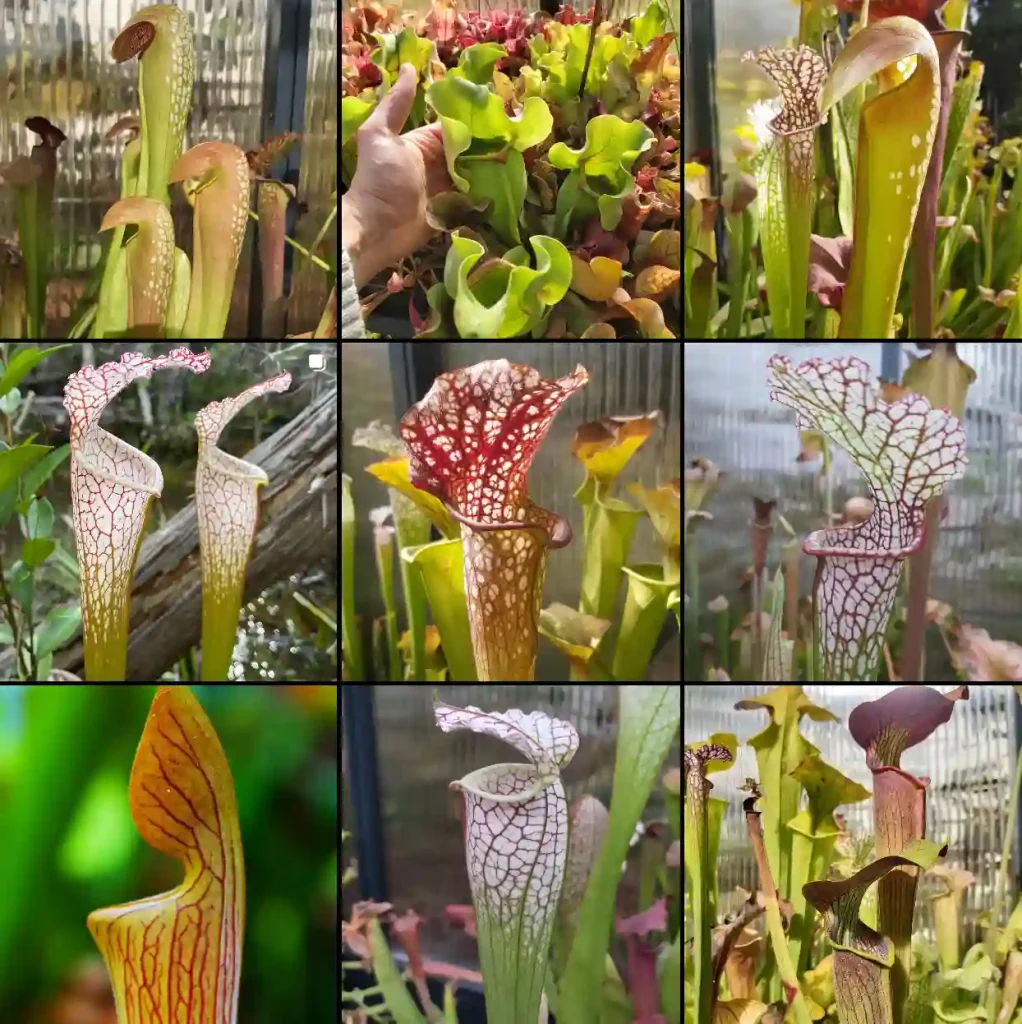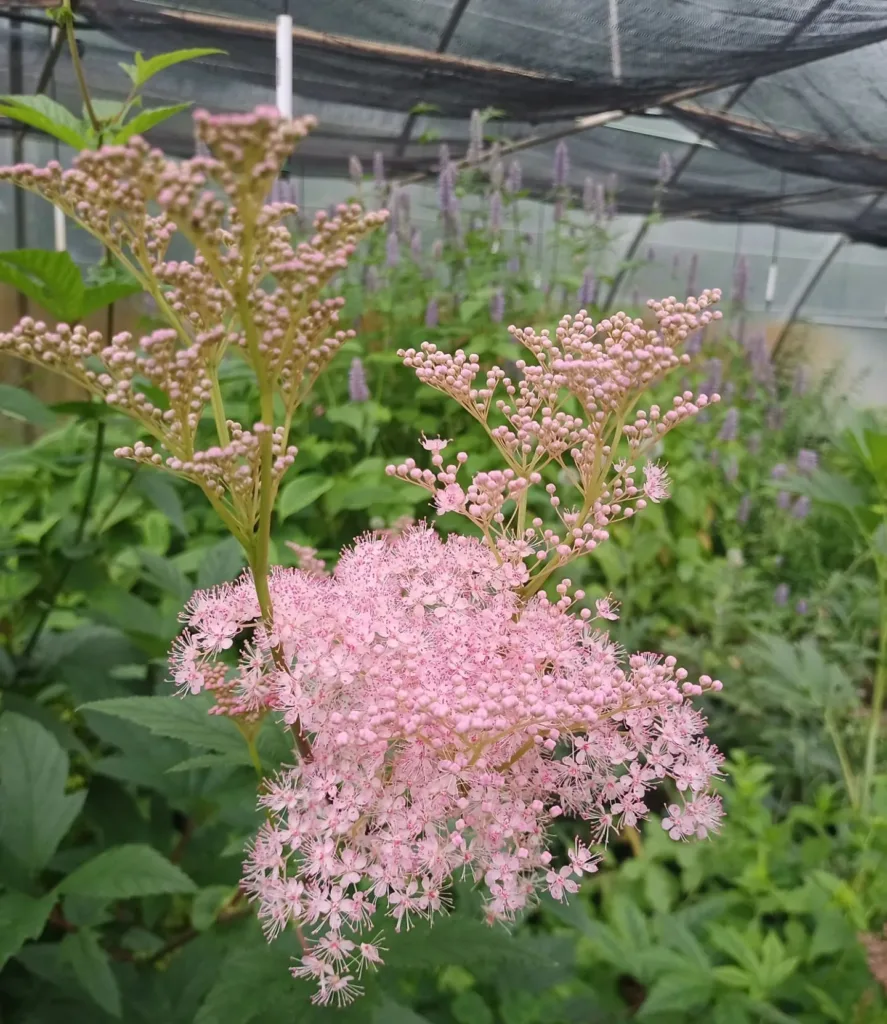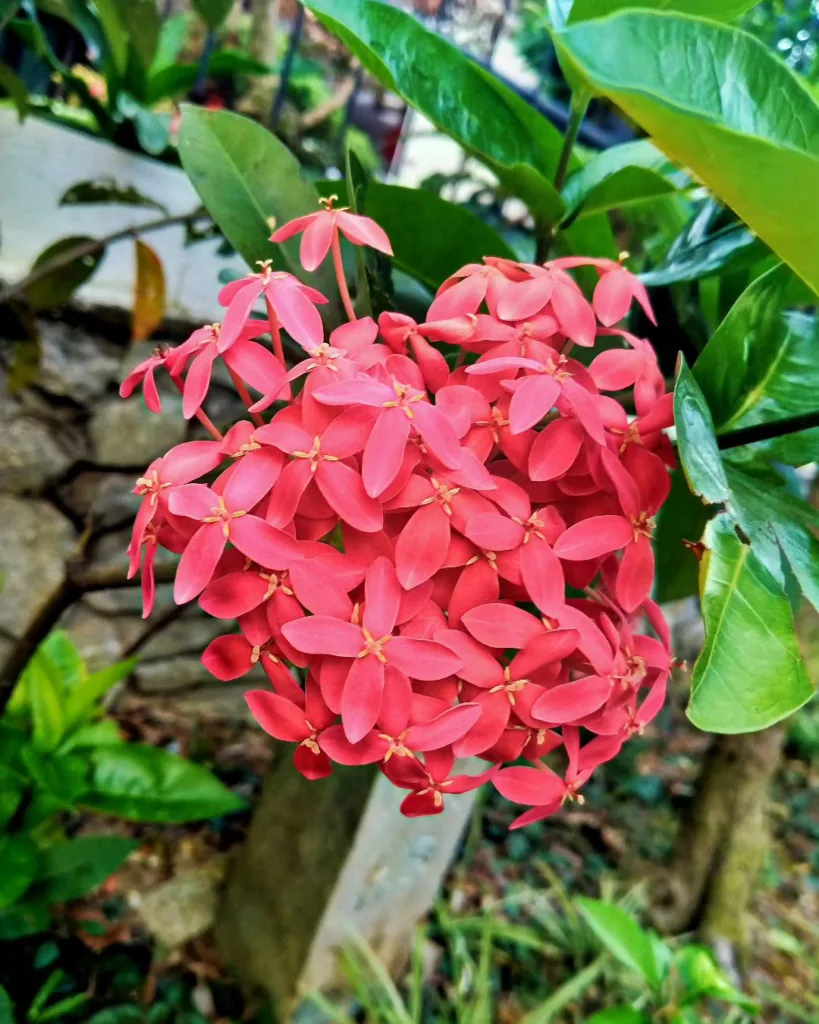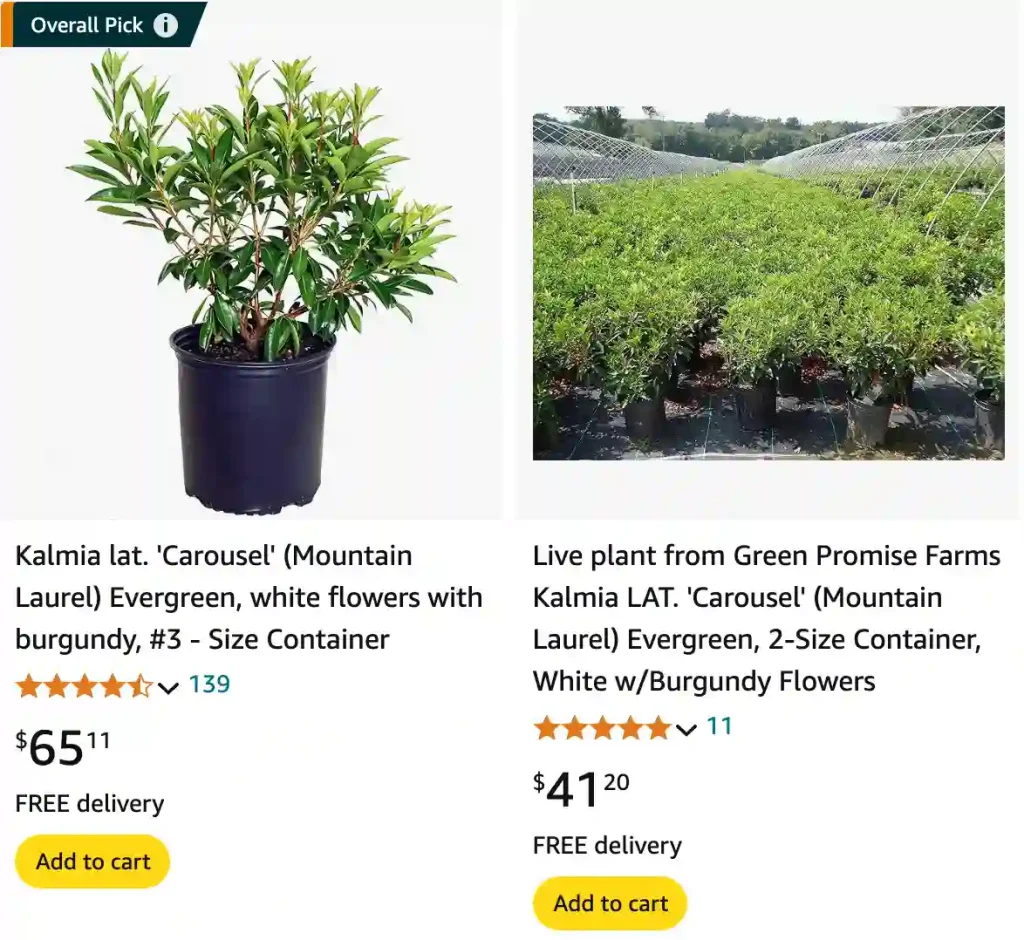
What is Mountain Laurel?
Mountain Laurel (Kalmia Latifolia) is one of those plants that always catches the eye in the landscape. With its stunning clusters of flowers and rich, evergreen foliage, it’s a favorite for adding beauty to gardens. Native to the eastern United States, it thrives in woodlands, on rocky slopes, and in areas with well-drained acidic soil. But what makes this plant so special? Let’s dive into some frequently asked questions about Mountain Laurel to help you better understand and care for this lovely shrub.
9 Species in Genus Kalmia
When Does Mountain Laurel Bloom?
Mountain Laurel typically blooms in late spring to early summer, with the exact timing varying based on location and climate. The flowers, which range in color from white to pink and even deep red, usually last for about two to three weeks. This blooming period is one of the highlights of the year for anyone who has Mountain Laurel in their garden, as the flowers are truly a sight to behold.
How Long Do Mountain Laurels Bloom?
Mountain Laurels generally bloom for about two to three weeks. The bloom time can be influenced by factors like temperature, soil conditions, and the specific variety of the plant. Ensuring that the plant is in the right environment will help it produce the best blooms.
Do Deer Eat Mountain Laurel?
One of the benefits of Mountain Laurel is that it’s generally deer-resistant. Deer tend to avoid it because the plant is toxic to them. This makes Mountain Laurel a great option for gardens in areas where deer are common and often cause problems by feeding on other plants.
Where to Buy Mountain Laurel?
You can find Mountain Laurel at most nurseries and garden centers, especially those that specialize in native plants. If you’re looking for a specific variety or want to ensure you’re getting a healthy, well-grown plant, consider buying from a reputable local nursery or an online store that offers native plants.
How to Grow Mountain Laurel from Seed?
Growing Mountain Laurel from seed is a bit of a challenge but can be very rewarding. The seeds need to be sown in a well-draining, acidic soil mix and kept moist but not waterlogged. Germination can take several weeks, and it’s important to provide the seedlings with light and protection from harsh conditions. Once established, the seedlings should be transplanted to a suitable outdoor location with partial shade and well-drained soil.
When to Prune Mountain Laurel?
Pruning Mountain Laurel is best done right after it finishes blooming, usually in late spring or early summer. This timing ensures that you won’t accidentally remove any buds that would produce next year’s flowers. Light pruning helps maintain the plant’s shape and remove any dead or diseased branches. Avoid heavy pruning as it can reduce the plant’s overall health and flowering potential.
Are Mountain Laurels Poisonous?
Yes, all parts of the Mountain Laurel plant are poisonous to humans and animals if ingested. This includes the leaves, flowers, and even the pollen. The plant contains grayanotoxins, which can cause severe symptoms like nausea, vomiting, and even more serious health issues. It’s important to handle the plant with care, especially if you have pets or young children who might be tempted to taste the leaves or flowers.
Is Mountain Laurel Poisonous to Dogs?
Mountain Laurel is indeed poisonous to dogs. If a dog ingests any part of the plant, it can result in symptoms ranging from drooling and vomiting to more severe reactions like difficulty breathing or heart issues. If you suspect your dog has eaten Mountain Laurel, it’s crucial to seek veterinary care immediately.
Is Mountain Laurel a Rhododendron?
Mountain Laurel is often confused with Rhododendron, as both plants belong to the same family, Ericaceae. However, they are distinct species. Mountain Laurel (Kalmia latifolia) has smaller, more rounded leaves and a different flower structure compared to Rhododendrons. While both plants thrive in similar conditions, they each bring a unique aesthetic to the garden.
Mountain Laurel vs. Rhododendron
Comparing Mountain Laurel to Rhododendron, one of the main differences lies in their flowers and foliage. Mountain Laurel typically has smaller, star-shaped flowers arranged in clusters, while Rhododendrons boast larger, bell-shaped blooms. In terms of foliage, Mountain Laurel’s leaves are narrower and more leathery, whereas Rhododendron leaves are broader and softer to the touch.
Mountain Laurel vs. Andromeda
Mountain Laurel and Andromeda (Pieris japonica) are both members of the Ericaceae family and share some similarities, such as their evergreen leaves and preference for acidic soil. However, Andromeda tends to bloom earlier in the spring and produces long, cascading clusters of small white or pink flowers, in contrast to Mountain Laurel’s more rounded flower clusters. Additionally, Andromeda often has a more compact growth habit, making it suitable for smaller garden spaces.
Mountain Laurel vs. Azalea
When comparing Mountain Laurel to Azalea, the primary difference is in their flower structure and growth habits. Azaleas, also part of the Ericaceae family, generally have smaller, more delicate flowers that can come in a wide variety of colors, from white and pink to vibrant oranges and reds. Azaleas also tend to be smaller and more shrub-like, while Mountain Laurel has a more upright, bushy growth habit.
Mountain Laurel vs. Cherry Laurel
Cherry Laurel (Prunus laurocerasus) is a completely different plant from Mountain Laurel, despite the similar names. Cherry Laurel is part of the Rosaceae family and is known for its glossy, broad leaves and white flowers that appear in upright spikes. It’s a popular choice for hedges and screens because of its dense growth. In contrast, Mountain Laurel’s more open, airy growth and distinct flower clusters set it apart.
Mountain Laurel vs. Magnolia
Mountain Laurel and Magnolia are often compared because they both produce stunning flowers and serve as focal points in the garden. However, Magnolias, with their large, cup-shaped flowers and broad leaves, offer a different kind of beauty compared to the delicate, star-shaped blooms of Mountain Laurel. Magnolias also tend to be larger trees or shrubs, while Mountain Laurel is typically a medium-sized shrub.
Mountain Laurel vs. Skip Laurel
Skip Laurel (Prunus laurocerasus ‘Schipkaensis’) is a variety of Cherry Laurel and is often used for hedging due to its dense growth and glossy leaves. Unlike Mountain Laurel, Skip Laurel has white flowers that are less showy and appear in small, upright clusters. The key difference lies in their uses: Mountain Laurel is often used as a specimen plant for its flowers, while Skip Laurel is prized for its utility as a hedge or privacy screen.
How to Care for Mountain Laurel?
Caring for Mountain Laurel involves providing the right conditions: well-drained, acidic soil, partial shade, and regular watering, especially during dry spells. Mulching around the base can help retain moisture and keep the roots cool. Avoid over-fertilizing, as too much fertilizer can lead to fewer flowers and more foliage.
Benefits of Planting Mountain Laurel
Mountain Laurel adds year-round interest to the garden with its evergreen foliage and beautiful flowers. It’s a great plant for attracting pollinators, and its deer resistance makes it a practical choice for many gardeners. Additionally, its ability to thrive in less-than-ideal soil conditions makes it a versatile addition to a variety of landscapes.
Common Problems with Mountain Laurel
Mountain Laurel is generally low-maintenance, but it can be susceptible to issues like leaf spot, root rot, and powdery mildew if grown in poorly drained soil or in overly humid conditions. Regular monitoring and proper care can help prevent these problems from becoming serious.
Mountain Laurel is a beautiful, versatile shrub that offers both aesthetic and practical benefits to any garden. Whether you’re considering adding it to your landscape or already have one in your garden, understanding how to care for it and the potential challenges will help you enjoy this plant to the fullest.
If i die, water my plants!
